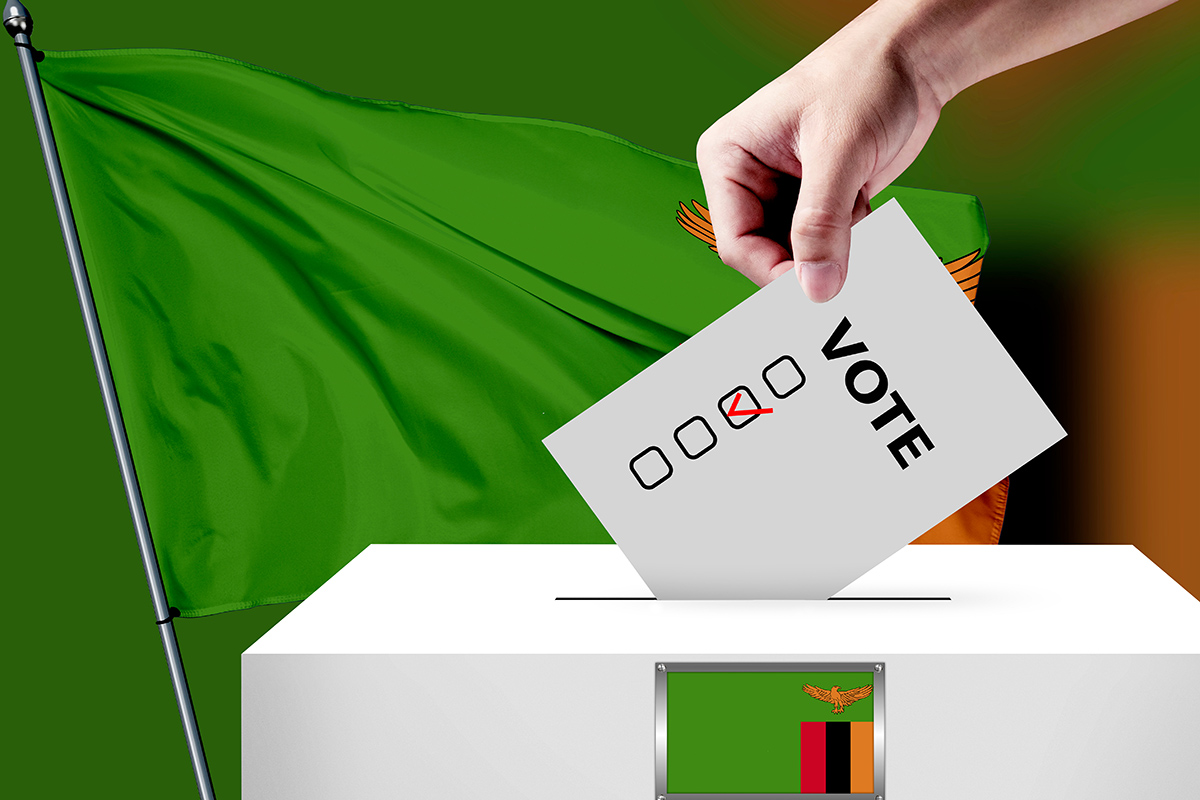The Invisible Hand in Zambia’s Electoral Politics
September 29by Chanda Katema
Adam Smith never cast a ballot in Lusaka or queued under the sun at a rural polling station, but his idea of the “invisible hand” still sneaks into Zambia’s political marketplace. He used it to describe how self-interest in a free market can end up serving the common good. But what does this market metaphor tell us about Zambia’s democracy as we look ahead to the 2026 general elections?
Elections have always resembled markets. Candidates compete for votes, offering manifestos, subsidies or empowerment schemes as if they were products on a shelf. Voters browse, compare and sometimes impulsively make their purchase at the ballot box.
Political scientists often call this the marketplace of ideas. But unlike supermarkets, where prices are clear and products tangible, elections involve uncertainty. Political parties sometimes advertise policies they can’t afford, leaving voters to deal with post-purchase regret. In this sense, democracy is a free market but one with plenty of counterfeit goods.
The invisible hand in politics is voter self-interest. Each individual casts a ballot not out of pure patriotism but because they hope to improve their economic or social condition. A farmer votes for the party promising better maize prices; a jobless graduate votes for the party with a credible jobs plan; a trader sides with whoever promises stable exchange rates.
When millions act in this self-interested way, the outcome often reflects broader economic concerns. Zambia’s recent elections illustrate this:
- In 1991, Zambians overwhelmingly voted for multiparty democracy, largely because they were frustrated with economic stagnation under UNIP.
- In 2011, the PF rode a wave of urban discontent about inequality, high food prices and joblessness.
- In 2021, the UPND surged on promises to tackle debt distress, corruption and youth unemployment.
The invisible hand guided these decisions, not some abstract ideology but material concerns at the household level.
Of course, no market is perfectly free. Governments regulate economies and elections too are shaped by distortions. Several distortions stand out in Zambia. Touted as a tool for decentralisation, the Constituency Development Fund (CDF) has become highly politicised. Ruling parties often showcase it as proof of delivery, while opposition figures decry uneven distribution and bureaucratic hurdles. In market terms, CDF acts like a state subsidy, sometimes genuine, sometimes manipulated to reward loyal constituencies.
From t-shirts to mealie meal, electoral freebies distort rational choice. Just as subsidies can encourage overconsumption of certain goods, handouts can nudge voters into short-term decisions that do not reflect long-term interests.
In markets, sellers often know more than buyers. Similarly, parties may exaggerate achievements or conceal costs. Campaign promises of cheap fuel rarely mention the fiscal burden of subsidies. Voters lacking complete information must gamble on trust. These distortions mean Zambia’s democracy is less like a perfectly competitive market and more like a hybrid bazaar, part free trade, part state intervention, part smoke-and-mirrors.
Economists like to assume people are rational actors. Political scientists know better: voters are also emotional. They don’t just choose the “cheapest” policy; they choose the leader who inspires confidence, resonates with their identity or simply seems trustworthy. Research on African elections shows that while economic grievances often drive opposition victories, identity politics, charisma and messaging style can tip the balance. This means that while the invisible hand is powerful, it is not mechanical. Like shoppers in a market, voters sometimes buy the brand they feel good about, even if it costs more or underdelivers.
As Zambia heads towards the 2026 elections, the invisible hand helps us make sense of likely trends:
- Economic performance will dominate. Just as consumers abandon shops with inflated prices, voters abandon governments that fail to tame inflation or create jobs. The UPND knows that macroeconomic reforms and IMF programmes must translate into household relief or the electorate will seek alternatives.
- Policy credibility will be tested. In 2021, promises of free education and youth empowerment resonated. By 2026, voters will evaluate whether those promises were delivered. Failure to meet expectations risks brand erosion.
- CDF will be a campaign tool. How equitably and transparently it is used will affect whether voters view it as a public good or a political carrot.
- Populism may rise. Temptations of quick fixes will be made, from fuel subsidies to instant cash transfers. Like discount sales, these may attract buyers but sustainability is questionable.
The invisible hand will ultimately reward whichever party convinces voters that their self-interest aligns with its policies. If democracy is a market, then the ballot is the most important currency. Zambia’s voters are rational enough to punish poor performance and reward credible alternatives, yet emotional enough to be swayed by charisma and narrative.
The invisible hand is alive and well in Zambian politics, guiding choices through a blend of material needs and political imagination. For parties, the lesson is simple: treat voters not as passive recipients of handouts but as discerning consumers who demand value for their vote. For voters, the challenge is to look beyond flashy campaigns and ask, is this product worth the price of five more years?
In 2026, the political bazaar will open again. The stalls will be full. The sellers will shout. The buyers will weigh their options. And the invisible hand, quiet but decisive, will do its work.
References
- Bratton, M. (2013). Voting and Democratic Citizenship in Africa. Lynne Rienner.
- Burnell, P. (2001). The Party System and Party Politics in Zambia: Continuities Past, Present and Future. African Affairs.
- Cheeseman, N. & Hinfelaar, M. (2010). Parties, Platforms, and Political Mobilization: The Zambian Experience. Journal of African Elections.
- Downs, A. (1957). An Economic Theory of Democracy. Harper & Row.
- Government of the Republic of Zambia. (2022). Constituency Development Fund Guidelines.
- Posner, D. & Young, D. (2007). “The Institutionalization of Political Power in Africa.” Journal of Democracy.
- Schumpeter, J. (1942). Capitalism, Socialism and Democracy.
- World Bank (2022). Zambia Economic Brief: Unlocking the Potential of the Private Sector.
- Zambia Institute for Policy Analysis and Research. (2023). Decentralisation and the CDF: Opportunities and Risks.






